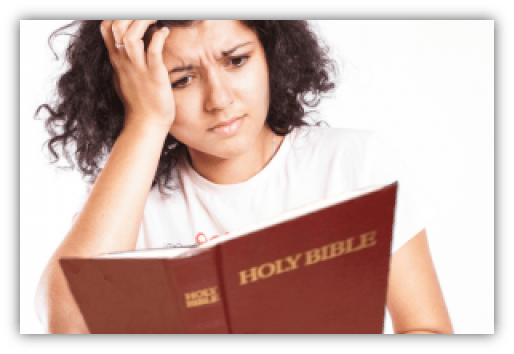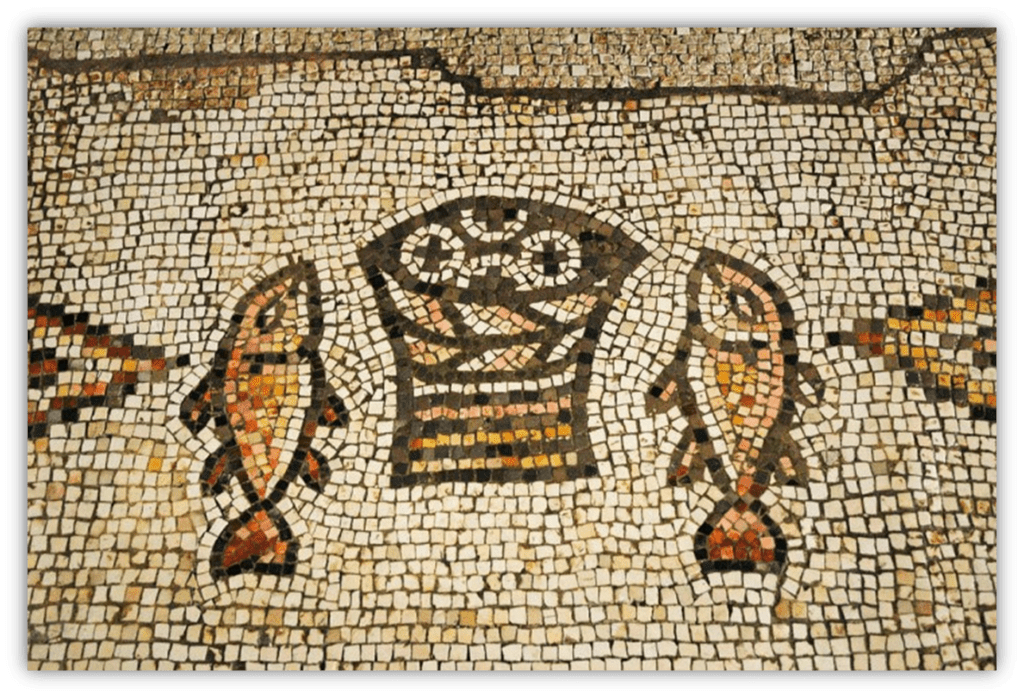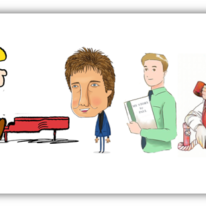In the introductory post for this series, I tried to argue that the gospel of Mark is misunderstood and often dismissed as a rough draft of sorts, expanded upon and “improved” by the gospels of Matthew, Luke, and John.
Biblical scholars tend to describe Mark as odd and puzzling due to how it doesn’t resemble those other gospels.

Yet it’s crucial to understand this first gospel story on its own terms.
We need to see the work for what it is, rather than what it isn’t, what it lacks, or how it’s different from anything else.
It’s also common (especially among laypeople, but sometimes even among scholars) to “fill in” what people think are gaps in the Mark story with content from the other gospels, i.e., to explain story elements of Mark using work from other authors. I’ll demonstrate this tendency in a later post.
Suffice it to say, we should regard the Mark gospel as a complete story in its own right, one that does not need any filling in, particularly from stories that hadn’t yet been written.

Okay, so let’s take a first glance at the broad strokes of Mark, the first gospel story. I tried to keep it simple, but even as it is, it’s a tad long. Feel free to take your time digesting it.
Here’s how it breaks down:
- Opening quotes from the Hebrew scriptures Malachi and Isaiah.
- John the Baptist announces the coming of Jesus Christ; he baptizes and blesses Jesus
- While Jesus is fasting in the desert, John the Baptist is captured and imprisoned.
- When Jesus returns, he gathers disciples to him, the first being three fishermen.
- We get several instances of Jesus performing miracles, such as healing the sick or casting out demons—followed by Jesus instructing the person or the demon to keep secret his identity as the holy one of God. This motif repeats throughout the gospel, yet while the demons keep silent, the people tend to disobey Jesus and tell others about his powers.
- We get the first of many instances in the gospel of Jesus establishing his authority over the Jewish scribes and teachers of Jewish law. Later come instances of Jesus declaring Jewish customs to be obsolete. The teachers of the law eventually plan to kill Jesus for his blasphemous declarations.
- Jesus appoints his twelve disciples as apostles.
- Jesus ignores and rejects his mother and brothers, saying “Whoever does God’s will is my brother and sister and mother.” This is the first of a few passages that put family and home in a negative light.
- Jesus teaches the crowd a parable about a man scattering seeds, which only take root when the seed lands upon fertile soil. He leaves the parable unexplained to the crowd, “otherwise they might turn and be forgiven!” Nevertheless he does explain the parable to his disciples. The seed is the word of God. It is spread everywhere, but only blooms when the word enters someone whose heart is not hardened.
- Jesus tells other parables to larger crowds, yet only explains their hidden meanings to his twelve disciples.
Already we can see that keeping a secret is very important in this gospel.
Jesus wants to spread his message in a cryptic way, and limit the number of people who know that he is the Son of God. It’s also clear that the author of the gospel has nothing but contempt for concerns about restrictions on food, or any of the traditional Jewish purity laws. Due to healed persons disobeying Jesus’ orders and spreading his secret, and due to Jesus’ open contempt for Jewish law, the scribes of Judea plot to kill this man for his radical blasphemy.
Moving on with the story:
- Jesus casts a demon out of a pig herder (and into the pigs), and for once he instructs the man to tell everyone what happened. The man obeys.
- King Herod has John the Baptist beheaded, as reward for a woman’s impressive dance routine. Someone mentions that the baptist was “Elijah,” the prophet from centuries past.
- Jesus instructs the twelve apostles to heal people in need by the powers of their faith.
- Jesus feeds five thousand followers with twelve basketfuls of loaves and fish.
- Jesus walks on water and passes by his disciples, but they are frightened and confused: “for they did not understand about the loaves. Their hearts were hardened.”
- A Syrophoenician woman begs Jesus to cast a demon from her daughter. Jesus tells her that the children should eat before the dogs. When the woman says that the dogs will eat the children’s crumbs, Jesus decides to heal her daughter.
- Jesus feeds four thousand people, with seven baskets of loaves and fish this time. Jesus tells his disciples to beware the yeast of the Pharisees and Herod. But his disciples think he is talking about bread. Jesus wonders if their own hearts are hardened, whether they have eyes but fail to see and have ears but fail to hear. He asks them about the significance of the number of baskets in the first mass feeding, and also the second. They don’t grasp the significance of the baskets (and Jesus doesn’t spell it out for the readers either).

Seems a bit harsh, does it not?
These disciples are written as kind of clueless!
What’s more, Gentiles seem to be more appreciative and obedient than the Jewish people. And Jesus even tells a Gentile outside of Judea to spread the news of him, rather than hide it.
Why the different treatment?
We’ll get into that later on, as well as the significance of the bread baskets, and “Elijah.” But we now get to a turning point in the story’s plot:
- The disciple Simon Peter recognizes Jesus as the Christ. Jesus tells him to keep this a secret. Jesus then says that the Son of Man must suffer and be killed, and Peter rebukes Jesus. Jesus in turn rebukes him. He tells his followers that they will have to take up their own cross to follow him.
- Jesus takes Peter, James, and John to a mountain, where the full divinity of Jesus is revealed to them. The voice of God instructs them to listen to his Son. Jesus tells them to keep this all a secret, until the Son of Man has risen from the dead. The three disciples are frightened and have no idea what “rising from the dead” is supposed to mean.
- They return to the other apostles, who fail to heal a man. Jesus despairs at this unbelieving generation. Later he tells them all that he will be betrayed and be killed, but that he would rise on the third day. And yet his disciples have no idea what he is saying, and are too afraid to ask him about it.
- Jesus provides some words of wisdom to his followers. James and John are rebuked for being ambitious.
- Jesus enters Jerusalem riding on a donkey. He sees a fig tree and curses it. He clears the temple of money changers and merchants. His disciples observe that the cursed fig tree has withered.
- The Pharisees of Jerusalem question Jesus’ authority, and Jesus tells them a parable about tenants of a vineyard killing the owner’s son, and the owner killing the tenants and giving the vineyard to others. The Pharisees interpret this as a threat, and seek to have Jesus arrested.
- Upon seeing the Temple of Jerusalem, Jesus warns his disciples of calamities and destruction to come. He tells them to be on guard, when the owner comes suddenly: “don’t let him find you sleeping!”
- Jesus rebukes Judas Iscariot for his rejection of a woman’s gift of perfume to Jesus. Judas then plots to betray Jesus.
Okay, the plot is moving faster now. There are surely plenty of details many of you will find cryptic. We’ll explore those later on. For now, just notice the actions of various disciples and followers as the plot kicks into high gear:
- Jesus and his disciples have a Passover meal. Jesus offers his flesh and blood as the food and drink to be taken in. But then he tells them that they will all fall away. Peter rejects this notion, and Jesus tells him that he will deny Jesus three times before the rooster crows.
- Jesus goes off alone to pray. When he comes back, he finds his disciples asleep on their watch, and admonishes them. This happens a total of three times.
- Jesus is arrested once Judas kisses him. A disciple cuts off the ear of a temple servant, but Jesus admonishes him; this arrest is fated to happen. Everyone scatters and flees, including one man who flees naked.
- Jesus is tried by the Sanhedrin priests. Simon Peter witnesses from afar, and disowns Jesus three times. Then the rooster crows.
- Pontius Pilate questions Jesus. He offers the crowd a choice: kill Jesus or the murder Barrabas? The Jews demand Jesus’ death, and Pilate grants this request. The soldiers mock him and cast lots for his clothing. A Gentile man named Simon carries Jesus’ cross.
- Jesus suffers and dies on the cross. When Jesus dies, the curtain of the Jerusalem Temple is torn in two from top to bottom. A Roman centurion recognizes Jesus as the Son of God.
- Joseph of Arimathea takes Jesus’ body and places it in a tomb secured by a giant rock.
- Later on, three women, including Mary Magdalene, bring spices to the tomb to anoint Jesus’ body. They find the giant rock has been rolled away, and see that a young man in a white robe is sitting there. The man tells them to tell the disciples and Peter that Jesus has risen from the dead, and that he will be waiting for them in Galilee.
- “Trembling and bewildered, the woman said nothing to anyone, because they were afraid.”
This is how the earliest copies of the Mark gospel end.
Later versions have one of two concluding sections added on, and these sections more or less resemble the conclusions of the Matthew and Luke gospels. But the earliest versions of Mark end on this bitter note, making the rather dark story feel all the darker upon conclusion.
What gives?
What is the purpose behind this gospel narrative?
What was the argument that its author was trying to advance? Why all the cryptic details, and what do they mean for the story?
Why is everything so damn secretive, and so damn severe?
… to be continued…
Let the author know that you appreciated their article with a “heart” upvote!





I look forward to seeing where you are headed. You’re setting up a very familiar tale in a different light.
Thanks! My hope is that this post gets people to feel like I felt when I first read Mark on its own terms, without the influence of the other gospels. That is, puzzled and curious to know what the heck is going on with this story!
Yeah, I’m guessing a lot of folks (like me) start with Matthew because it’s the first NT book, and (like me) automatically fill in the gaps when they get to Mark, treating it like a Reader’s Digest condensed version. It’s interesting looking at it through fresh eyes!
Yeah, in a way it’s an injustice by the publishers.
And yet…hiding in plain sight is something the Mark author seems to really like.
After all, the sower’s seeds are scattered everywhere, so that just a few might reach fertile soil to grow and bloom…
Seems like The Empire Strikes Back of the Gospels…
Or vice versa.
The Empire certainly plays a role in this story, but I won’t run with that any further lest the analogy get too….Forced… 🤓
Very good analysis of this gospel. Lots of contrasting messages. Looking forward to further editions.
Thanks! This post was just to set the stage, after which we’ll be able to dig in and try to make sense of it all.
One of the bullet point in “Here’s how it breaks down” is some hair raising information. It’s an aspect of Christianity that answers a question I’ve had for quite some time. It’s like a secret, because it’s the first time I’m hearing about it.
I know about a 1903 Kiev-based text that was translated into English and became popular in America, and eventually, around the world. This highlight from Book of Mark communicates to me that the author of the 1903 text cited a primary source. And that is new to me.
Interesting. Do tell.
I have a feeling that Ken Burns will bring it up in his forthcoming documentary series.
I tell you what, that “US and the Holocaust” documentary series Ken Burns’ got debuting on PBS this week is absolutely riviting. Anyone else watching it? They have done a phenomenal job of framing how worldwide attitudes were 100 years ago and making it seem uncomfortablely modern.
I brought it up…and I didn’t realize it started…it’s a pretty short list of people who could get this project off the ground.
Man, the Gospel of Mark is pretty hardcore, isn’t it? It may be my favorite because it tends to emphasize Jesus’ humanity and downplay his divinity. I just like the idea that Jesus was a regular, kind man burdened by the greatest task of all time. Compared to the depictions in Luke and John, anyway. Looking forward to more!
Hmmm…I don’t know if I agree with that take about Jesus in Mark, but that’s something we can discuss in later installments!
Despite what I said last week about not being too familiar with the gospels turns out there’s plenty that I’ve picked up on through cultural osmosis and remember from school. Even without having read the gospel of Mark the main story points all came back to me reading this. Fascinating to fill in the gaps in my knowledge and to read of the cryptic nature of the story, looking forward to learning more of why that is.
Cool! Well, do let me know if anything in subsequent posts need unpacking. For this one, I’m intentionally leaving everything thoroughly bundled up…
Well done series, Phylum. I’ll give two cents worth when you complete the series (hint: I used to drive my Catholic nun teachers crazy with my questions)
Thanks! I may already be crazy, so hopefully your many questions will drive me sane!
Old CCC joke: This is where Jesus left his Mark.
Contemporary Christian Church?
Civilian Conservation Corps?
Community College of Cincinnati?
Creedence Clearwater Crocodile?
It’s been so long that I might have this wrong but I think it stands for Catechism of the Catholic Church. It was a basic Sunday school for us Catholic kids in the 1960s, but don’t sleep on Creedence Clearwater Crocodile’s first album. It’s a banger.
That “Green River” ain’t green for nuthin…
I’m familiar with the CCD (Confraternity of Christian Doctrine) Is that what you meant? It’s basically the Bible for children.
Oh no you didn’t, you did not stop on that question!
Is that to give us time to formulate our own theories? Ooh, it’s like tnocs homework from Phylum….
It’s dark and mysterious and secretive because frankly, that’s life. That was always my take away, even from a young age. The gospels read to me like the OG Brothers Grimm tales, with blood and terror and fear. Life is not Disney-fied.
Eagerly awaiting the next chapter. 🙂
Thanks! As Our Lady of La Isla Bonita once put it: “Life is a mystery.”
I did want to leave it on a cliffhanger this time, without explaining anything.
Not just to soak up the mystery (and that is important), but also to present the gospel story as it actually unfolds, to appreciate how different and curious it is before we even go into possible meanings. I think that fact alone is under-appreciated.
Now on to the tinfoil!
Great reading Phylum, we know that sometimes it’s complex to understand those gospels.
And speaking of:
“Jesus ignores and rejects his mother and brothers, saying “Whoever does God’s will is my brother and sister and mother.” This is the first of a few passages that put family and home in a negative light.”
Days ago a priest said that those are the kind of things that we must not take literally, because Virgin Mary didn’t have any more sons, and knowing the relationship that Jesus had with his mother, it’s improbable that he treated wrong his own mother in public.